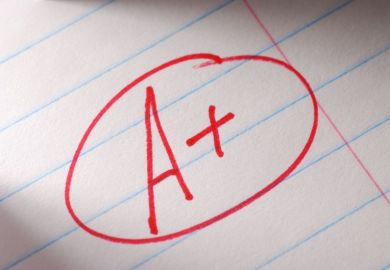One of Australia’s most senior higher education regulators has defended his country’s quality assurance system against claims that it imposes too great a bureaucratic burden on the sector.
Michael Wells, who is one of four commissioners of Australia’s Tertiary Education Quality and Standards Agency, told an audience at King’s College London that the annual checks carried out by the organisation, founded in 2011, were not as hated by the country’s universities as imagined.
Mr Wells delivered his talk on 7 November in the wake of moves by Tony Abbott’s new Liberal-National Coalition government to cut red tape amid complaints that Teqsa gathers “mountains of data for no good reason”.
Under Teqsa’s risk-based oversight system – which at one point had been seen as a potential model for the UK sector – higher education institutions must each year submit data on a series of performance indicators, such as financial performance, staff-student ratios and dropout rates.
The information is graded on a traffic light system, with red- or orange-flagged items prompting discussions with Teqsa that can trigger an institutional review.
Mr Wells, who formerly served as executive director of finance and planning at the University of Melbourne, suggested that higher education institutions viewed the exercise as a useful “management health check” despite the bureaucratic burden of collecting the data every year.
“It [is seen] as a reasonable review from someone outside [the university],” Mr Wells said. “They put a lot of attention into it as it goes to the governors with red, orange and green indicators on it.”
The annual checks were introduced following the deregulation of student places in Australia – known as the move towards a “demand-led” system.
Australia now has 172 higher education providers, half of which have fewer than 500 students and many of which have fewer than 50. Teqsa’s annual checks were designed to pick up problems that developed between institutional reviews, Mr Wells explained.
“You could not take a radically different model [such as the demand-led system] and say ‘none of this is a risk to quality’,” he said.
“Without it [Teqsa’s risk-based approach], you might be waiting until the sixth or seventh year of a [review] cycle to see what is going on at an institution.”
But it was suggested by Bahram Bekhradnia, director of the Higher Education Policy Institute, who was also in attendance at the King’s College London event, that Teqsa’s risk-based review system “was a huge edifice to crack a very small nut – weeding out a few dodgy colleges”.
None of the information collected was used to improve teaching, nor was it made available to students to help inform their choice of university, Mr Bekhradnia added.
However, Mr Wells suggested that the data, which are seen only by institutions and Teqsa, could be publicly available in future.
“We will probably be moving to that over time,” Mr Wells said, although he added that there was concern that data could be “reverse-engineered” to create a league table of at-risk institutions that may serve to destabilise the market.
“The higher education sector is not ready for that,” he said.
Register to continue
Why register?
- Registration is free and only takes a moment
- Once registered, you can read 3 articles a month
- Sign up for our newsletter
Subscribe
Or subscribe for unlimited access to:
- Unlimited access to news, views, insights & reviews
- Digital editions
- Digital access to THE’s university and college rankings analysis
Already registered or a current subscriber?




